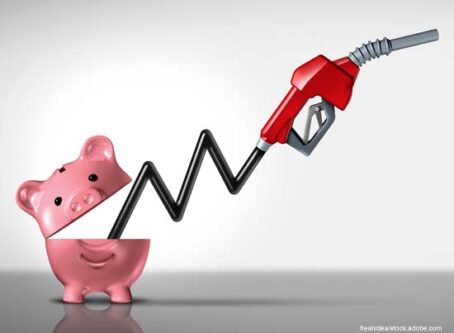Fuel supply closer to meeting demand as economies recover from COVID-19
Since May 3, the price of diesel has increased weekly. However, experts do not expect that trend to continue as we reach the latter part of 2021.
The Energy Information Administration’s short-term energy outlook is predicting a drop in fuel prices by the end of the year so long as supply catches up with demand.
“We’ve seen a pretty strong recovery from an economic perspective and a lot of oil demand, for both diesel and gasoline,” said Tim Hess, EIA’s product manager for short-term energy outlook. “We expect that to continue, specifically from a global sense, which directly affects the price we pay at the pump here.”
As with any forecast, there are certain variables that need to be taken into account. Hess pointed out two factors in particular.
COVID-19
The COVID-19 pandemic has created at least some level of uncertainty in nearly every industry. Fuel is no different. EIA is forecasting some relief in pricing by the end of 2021, provided certain conditions are met.
“There’s an uncertainty with COVID-19, given that we have never been through anything like this,” Hess said. “We have models built around how oil demand responds at certain levels of economic activities. A lot of people are still working from home and may continue to do so even as things get back to normal. Getting a handle on how these new relationships form will be important. Generally, we expect crude oil prices to decline in the second half of 2021.”
Both OPEC and U.S. producers slowed operations in response to COVID-19 restrictions, so for the time being, supply is still trying to catch up to demand.
“The supply was reduced and demand started to come back which led to the higher prices we’ve seen this year,” Hess said. “Rig activity has picked up, and we expect U.S. production to begin increasing by the end of this year. If that happens we would expect modest downward pressure on prices.”
Of course, this can all change should any previous or new COVID-19 restrictions be mandated, Hess said.
Hurricane season
A more typical, yet still highly unpredictable, variable is hurricane season, which began on June 1.
The 2021 season has already seen the strongest July storm in the Caribbean since 2005 in Hurricane Elsa, which caused an estimated $290 million in damages in the Caribbean and United States.
Predictions, as of early July, call for above-normal activity this hurricane season. Any disruption in fuel production due to future storms could create a situation where supply won’t catch up with demand.
“It’s important to note a big variable that we get into this time of the year is hurricane season,” Hess said. “This could cause prices to increase this year depending upon where the storms hit and if refining capacity is limited at all.” LL









